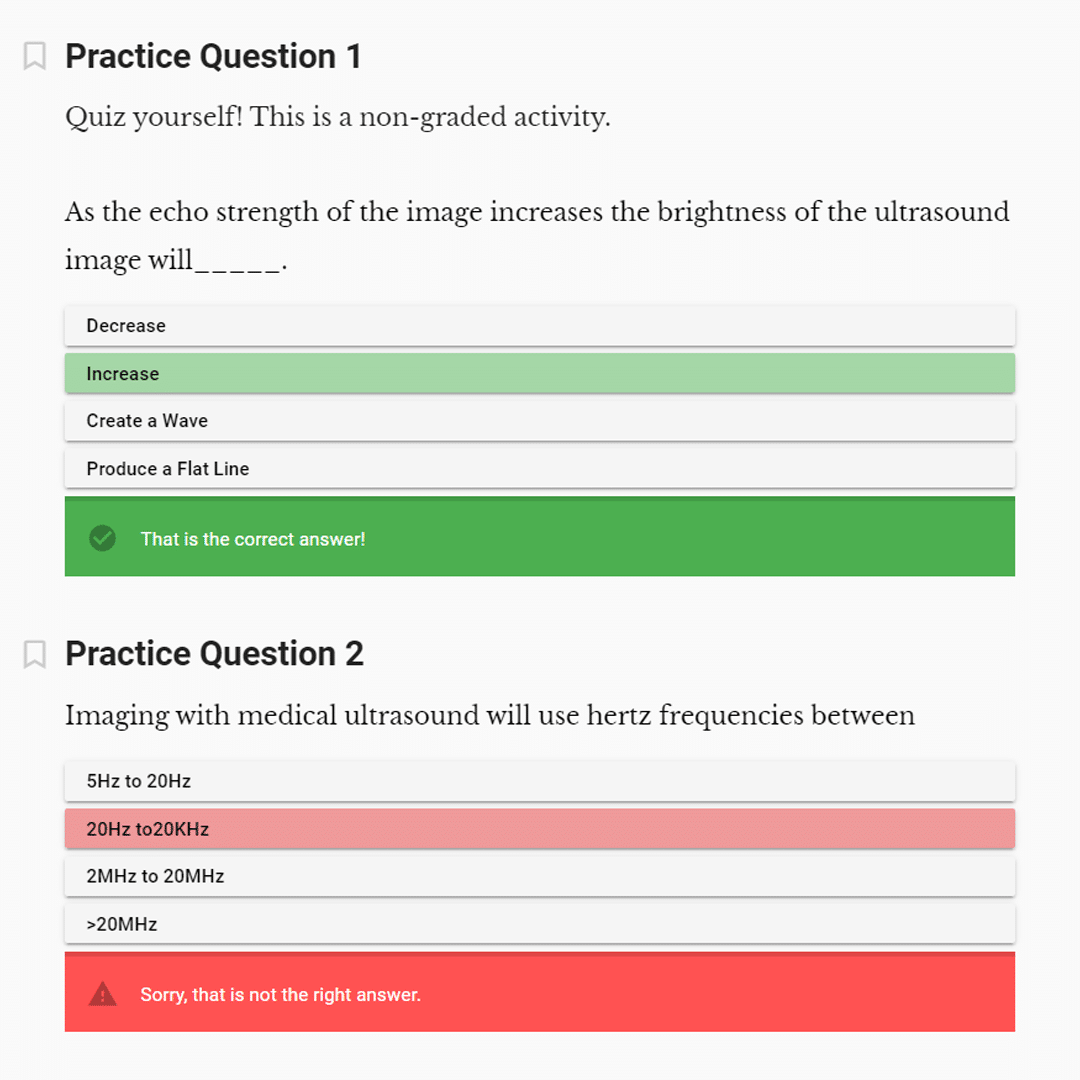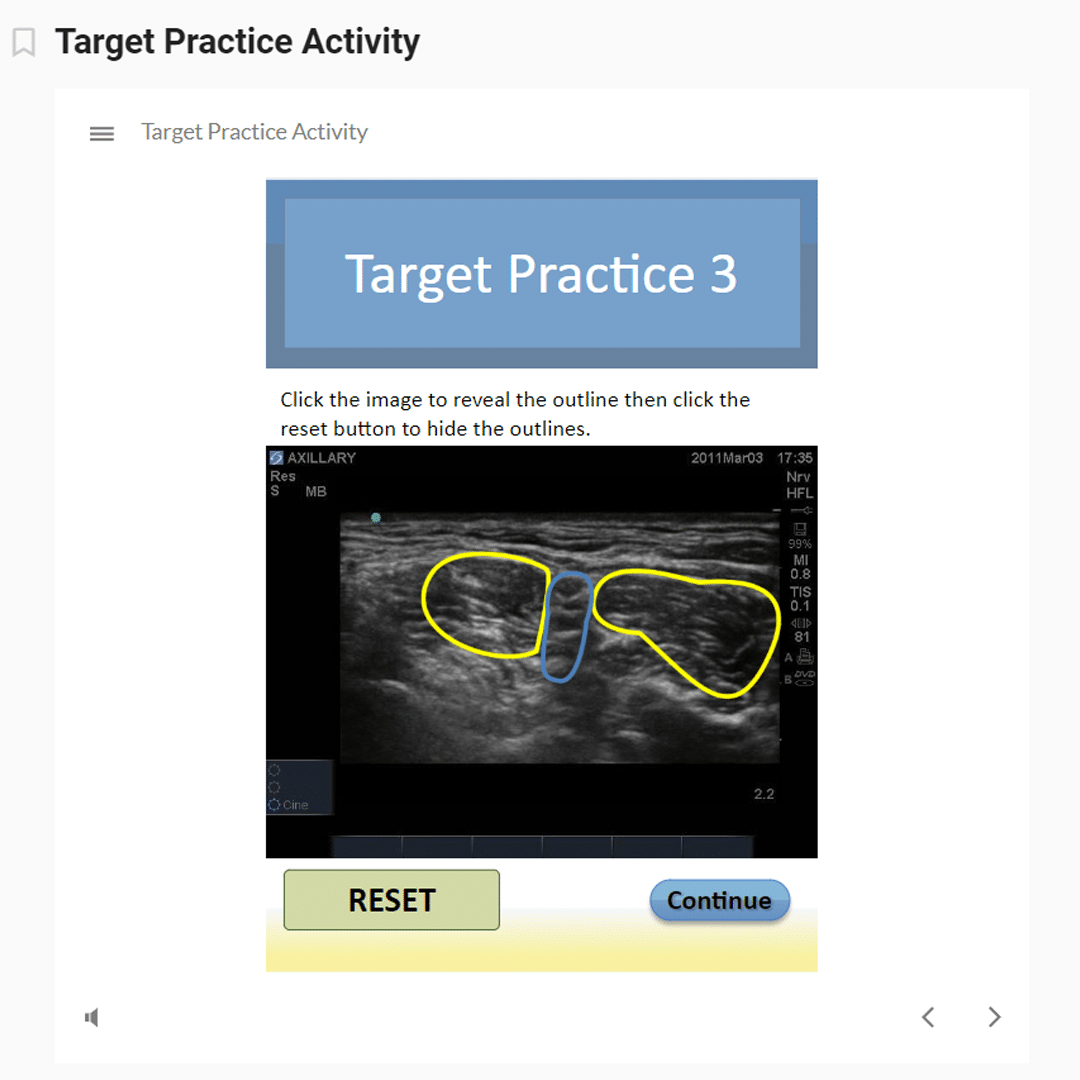The traditional Maverick course offerings include online didactic modules and a human specimen cadaver lab. However, we understand the cost constraints and weekend availability of practicing professionals. We offer an Online-Only option for a few courses using the same didactic learning modules as the complete course, but at a lower cost and with the freedom to complete the material at your own pace within 1 year of purchasing.
The Online-Only Course Saves Time & Money, without the Hands-on Lab
The online modules were developed in collaboration with practicing CRNAs with years of experience in regional anesthesia, education experts in the field of Pedagogy from Texas A&M University, and instructional designers. The resulting content implements proven methodologies to provide students with a comprehensive online learning experience.





Check out our Online-Only course options below!
In the foundational portion of the course, you’ll focus on the core skills necessary for safe and effective regional anesthesia. Key areas of learning include:
- Ultrasound-guided nerve block techniques
- Anatomical landmarks for regional anesthesia
- Peripheral nerve blocks
- Safety protocols and complication management
The foundation is designed for practitioners new to regional anesthesia or those looking to strengthen their established skills. This foundational content explains how to perform the following basic nerve blocks:
- Axillary
- Adductor Canal
- Genicular
- Interscalene
- PENG/LFCN
- Popliteal Plexus
- Popliteal Sciatic
- Supraclavicular
Building on the essential knowledge, the advanced portion of the course takes your skills further with more complex blocks and specialized techniques. You will:
- Learn advanced ultrasound-guided techniques for deeper and more challenging nerve blocks.
- Explore continuous catheter techniques for longer-term pain management.
- Delve into new and emerging methods in regional anesthesia.
- Gain insight into advanced clinical decision-making and problem-solving in challenging scenarios.
This segment is designed for practitioners more experienced in regional anesthesia or those looking to strengthen their basic skills. This advanced content explains how to perform the following basic nerve blocks:
- Erector Spinae
- Paravertebral
- PECs 1&2
- Quadratus Lumborum
- Suprascapular
- TAP
- Catheter Placement
This course combines our Regional Anesthesia Basic Techniques course and our Point-of-Care Ultrasound with Vascular Access course into one complete online-only course pack. The Combo course features content covering 10 foundational blocks that we believe everyone should know, as well as a thorough explanation of POCUS and how to use it for patient assessment.
This course is ideal for CRNAs, nurse practitioners, physician assistants, and other allied health professionals who want to learn the skills necessary to perform ultrasound-guided regional anesthesia and POCUS. The course is also a great way to stay up to date on the latest advances in these areas.
Regional Anesthesia Basic Techniques: Covers the basics of regional anesthesia, including the following ultrasound-guided nerve blocks:
- Adductor Canal
- Axillary
- Femoral
- Genicular
- Interscalene/Supraclavicular
- PENG/LFCN
- Popliteal Plexus
- Popliteal Sciatic
POCUS with Vascular Access: Teaches the use of POCUS to assess:
- POCUS for Gastric Assessment
- POCUS for peripheral vascular access
- POCUS for Internal Jugular access
- Cardiac assessment for normal cardiac function and commonly seen pathological conditions
- Pulmonary assessment for normal function and common problems.
- eFast assessment for trauma and hemodynamically unstable patients
- POCUS for DVT assessment
This course teaches participants the crucial skill of point-of-care ultrasound as an assessment tool, and how to utilize ultrasound for vascular access.
Point-of-Care Ultrasound (POCUS) assessment is quickly becoming an integral way to make a fast and accurate assessment of patients for clinical decision-making. It is performed at the bedside and has been proven to be accurate and repeatable for serial assessments of unstable patients to help guide in their care. Some have stated that “ultrasound will soon replace the stethoscope.”
US Guided Vascular Access skills can be used to initiate IV access for any and all surgical procedures, increases success rate with less needle sticks, decreases the need for central line placement, saves time and money. But most importantly, US Guided Vascular Access increases patient satisfaction by not getting stuck multiple times.
Online Modules Topics Covered:
- An Introduction to Ultrasound
- How Ultrasounds produce an image on screen
- POCUS for Gastric Assessment
- POCUS for Peripheral Vascular Access
- POCUS for Internal Jugular access
- Cardiac assessment for normal cardiac function and commonly seen pathological conditions
- Pulmonary assessment for normal function and common problems.
- eFast assessment for trauma and hemodynamically unstable patients
- POCUS for DVT assessment
The online didactic modules have been approved by the American Association of Nurse Anesthetists (AANA) for 32 Class A CE credits.
Interested in the hands-on lab plus the online modules? Learn more here: Point-of-Care Ultrasound with Vascular Access: Complete Course

